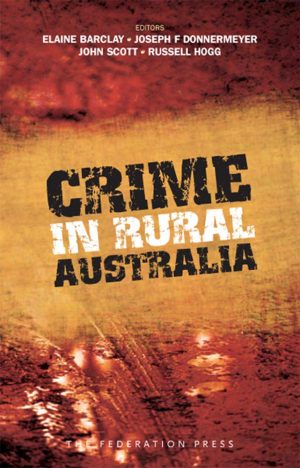Planning in Queensland: Law, Policy and Practice takes a fresh look at the operation of planning law in Queensland, incorporating insights based on current debates and reforms to the relevant law. As with its predecessors, this new text explains the main features of Queensland’s principal planning statute, now the Planning Act 2016, and brings the features of this highly technical statute to life with a variety of case studies drawn from planning documents and legal sources.
The development industry is an important pillar of the Queensland economy. This book describes, in an accessible way, the legal framework within which this industry must operate. It makes the technicalities of the law easy to understand for a wide range of readers – practitioners, students, concerned residents and anyone who cares about the form and implications of Queensland’s ongoing urban development.
England’s thoughtful analysis stimulates further discussion about the important issues underlying the nature of the development system. The book also includes a contribution from Judge Michael Rackemann, which offers valuable insights into the Planning and Environment Court.
This book provides a clear account of the principles of the Planning Act 2016 and invites the reader to question, challenge and probe further into an area of law that is actively shaping the future face of Queensland.
Foreword by the Hon Judge Michael Rackemann
Preface
List of Tables, Figures, Boxes
List of Abbreviations
Table of Cases
Table of Statutes
1. The Planning Picture: A Context and History
Introduction
What is planning law?
A brief history of planning law in Queensland
Twenty years of planning law reform: observations and reflections
Conclusion
References
2. Ecological Sustainability: Standing Aloof?
Introduction
What is ecological sustainability?
What does the duty to facilitate ecological sustainability actually involve?
Implementing ecological sustainability in the PEC
Some comparative jurisprudence from New South Wales
Conclusion: whither the goal?
References
3. The Controlling Hand? State Powers in Planning and Development Control
Introduction
State planning instruments
Other State powers
Economic Development Act 2012
Case studies of the State–local interface
Conclusion
References
4. Local Planning Instruments
Introduction
Local planning schemes
Other local planning instruments
Performance based planning in practice
Conclusion
References
5. Bringing It All Together: The Development Assessment System
Introduction
The Development Assessment System: origin and evolution since 1997
What is development and when must it be assessed?
The DAS steps
What happens if a procedural requirement in the DAS is not complied with?
Private certification
Conclusion
References
6. Judicial Contributions to Development Assessment
Introduction
Planning instruments – general principles of interpretation
New and draft planning instruments
Code assessment: the residual discretion
Impact assessment: additional assessment criteria
Conclusion
References
7. Approvals, Conditions and Charges
Introduction
Development approvals
Development conditions
Infrastructure charges and conditions
Conclusion
References
8.Making it Work: Offences, Disputes and Appeals
Introduction
Development offences and enforcement provisions
Legal proceedings – declarations and appeals
Dispute resolution bodies
Practice and procedure
Special features of the PEC
Development tribunals
Conclusion
9. Conclusion
Index
[A] timely and accessible overview of the framework for planning law in Queensland following the coming into force of the Planning Act 2016. … The authors do not simply review and summarise the effect of the planning legislation, but begin with the planning policy and principles that underlie the planning framework itself, and throughout the text identify the tensions that the planning law attempts to balance, and question whether the balance has tipped too far one way or the other. …
[T]he matters explored are of broad relevance and the text provides a solid and accessible foundation for any practitioner looking to practice in the jurisdiction.
Queensland Law Reporter – 23 August 2019 – [2019] 33 QLR
Reviews of Integrated Planning in Queensland:
This book is useful for anyone involved in planning in Queensland. …The latest changes to IPA are intended to be more than just procedural reform. They aim to further reconcile public sector reform with ecological sustainability and the strengthened role of local government in Queensland planning. For newcomers to the jurisdiction this book provides an insight into the theoretical and historical context of IPA and trends influencing Queensland’s planning environment. Self-represented litigants and others unfamiliar with the rights and processes involved with IPA will find it an excellent general reference tool. Individuals already familiar with Queensland’s planning regime will find this book useful in keeping up to date with IPA developments and changes such as the recent Integrated Planning and Other Legislation Amendment Act 2003.
The Queensland Lawyer, Vol 25(1), August 2004
A book that will be particularly useful for planners, academics, members of the legal profession and officers of public agencies … a comprehensive piece of work explaining the background and operation of the legislation [many elements of which] borrow from the New Zealand Resource Management Act. … Philippa England’s book is the most comprehensive analysis and overview of the legislation published to date. While the book is focused upon the Queensland legislation, many sections of the book have relevance to integrated planning in other parts of Australia. … some sections of the book will be superseded by coming changes to the legislation; however, these changes will not affect the relevance of the book [which] is an important reference and a compulsory read for anyone associated with the interpretation of the Act in Queensland.
Sustaining Regions, Vol 1(1), August 2001






